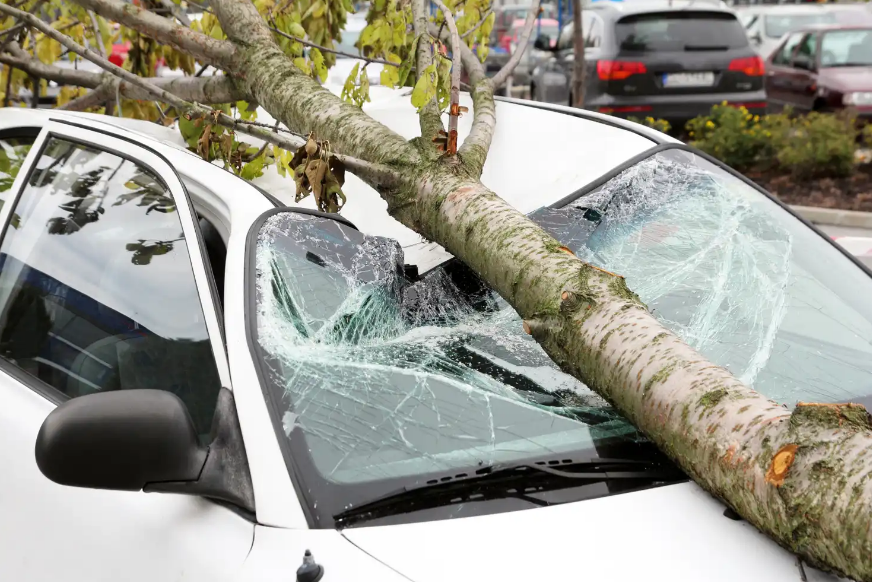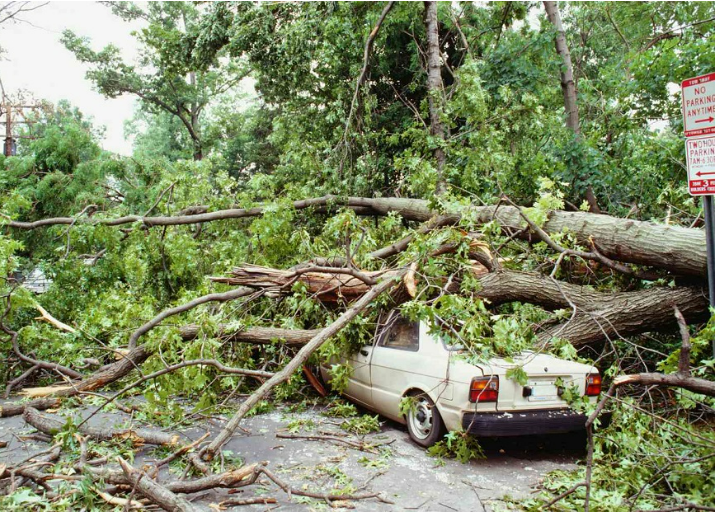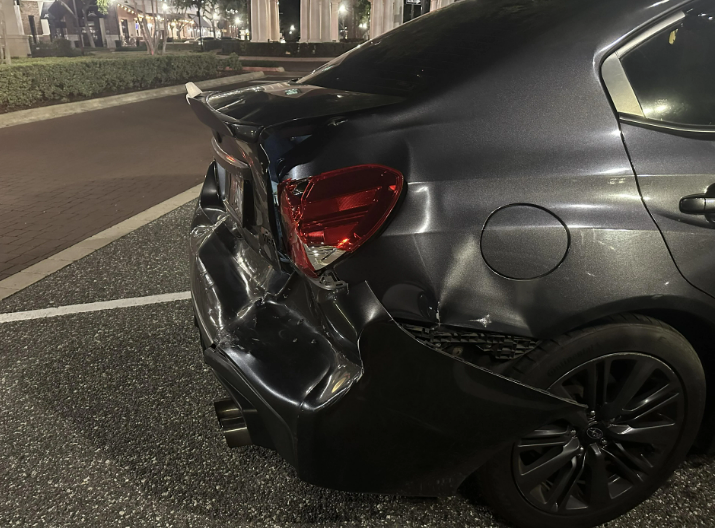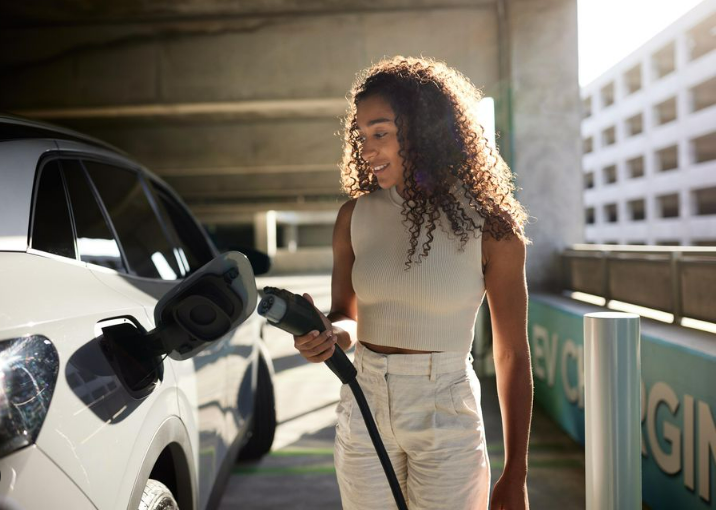Does Car Insurance Cover Tornado Damage?


Tornadoes often spell disaster for homes, cars, and personal belongings in their trajectory. Annually, over 1,200 tornadoes are reported across the U.S., with Illinois, Alabama, and Colorado experiencing the highest activity in 2023. Despite their prevalence in certain states, tornadoes can strike almost anywhere in the country, posing a risk to vehicles and other property. Whether car insurance covers tornado damage hinges on the specific coverage you have chosen.
Does insurance cover tornado damage to cars?
Most states mandate that drivers carry at least a minimum amount of liability car insurance to legally operate a vehicle. However, liability coverage does not extend to repairing your vehicle if it sustains damage in a tornado or another storm. Liability insurance is designed to cover the other party’s injury or property damage if you are at fault in an accident.
Collision coverage is an optional add-on that drivers can purchase to cover repair costs for their vehicle in case they cause an accident. It is often paired with comprehensive coverage to form what is commonly known as a full coverage car insurance policy.
For protection against tornado or storm damage to your vehicle, comprehensive coverage is essential. Comprehensive insurance covers a range of incidents including:
- Broken windows and windshields
- Fire damage
- Collisions with animals
- Vehicle theft
- Vandalism
- Damage caused by weather-related events
When opting for comprehensive and collision coverage in your auto insurance policy, you will need to select a deductible for each type of coverage. A deductible is the amount you must pay out of pocket when filing a covered claim. Generally, choosing a higher deductible lowers your insurance premium but increases the amount you must pay in case of a claim.
Types of tornado damage covered by comprehensive insurance
Certain storm-specific scenarios are typically covered under sufficient car insurance policies:
- Damage caused by downed power lines
- Electrical damage
- Falling tree limbs
- Flying debris
- Flooding
- Hail damage
- Lightning
A tornado has the potential to inflict significant damage on your vehicle, possibly even totaling it in extreme cases. Powerful tornadoes can lift and relocate a car from its original position. Within the tornado, debris such as gravel, tree limbs, furniture, or other vehicles can collide with your car, causing dents, broken glass, or worse.
Moreover, tornadoes often bring heavy rainfall in a short period, leading to potential flooding. Comprehensive coverage extends to flooding resulting from tornadoes and subsequent storms. Lightning poses another weather-related threat capable of causing electrical and physical damage to your vehicle, also covered by comprehensive insurance.
Will a tornado claim increase my car insurance rates?

Filing a claim with your car insurance company can lead to increased rates. Generally, comprehensive claims are less penalized compared to collision claims because insurers recognize that comprehensive incidents are often beyond the driver’s control.
When there’s widespread storm or tornado damage in your region, insurers may raise rates for all policyholders, regardless of whether individual claims were filed. This rate adjustment, known as a rate revision, requires state approval before insurance companies can implement it.
How to file a tornado insurance claim
If your vehicle has been damaged by a tornado and you have comprehensive coverage, it’s advisable to file a claim promptly. Tornadoes often cause widespread damage to numerous vehicles and properties, leading insurance companies to handle a surge in claims.
Here are steps to follow when filing a claim for tornado damage:
- Document the Scene: Before clearing any debris, take photographs or videos of the damage to your vehicle and the surrounding area. Capture close-up shots to provide clear evidence to your insurance company.
- File the Claim: Contact your insurance company to file a claim either by phone, online, or through their mobile app. Include the documentation you gathered in the first step, such as photos or videos of the damage.
- Note the Claim Number: Make sure to jot down your claim number for easy reference and tracking of your claim status.
- Exercise Patience: While awaiting contact from a claims adjuster, which may take some time due to the volume of claims, consider reaching out to your preferred repair shop. They can assess the damage and provide an estimate, which can be sent directly to your insurance company to expedite the process.
Being proactive and thorough in documenting the damage and filing your claim can help streamline the insurance process after a tornado event.
How to protect your car from tornado damage
If severe weather like storms or tornadoes is forecasted, taking precautions to protect your car beforehand can help minimize potential damage. Here are some proactive steps you can take:
- Choose Safe Parking: Avoid parking in low-lying areas that are susceptible to flooding.
- Avoid Hazardous Areas: Do not park near gravel driveways or parking lots, loose furniture or debris that strong winds could lift, telephone poles, or trees.
- Use Enclosed Parking: Whenever possible, store your vehicle in an enclosed structure or garage to shield it from the elements.
Taking these precautions ahead of severe weather can reduce the risk of damage to your car.








